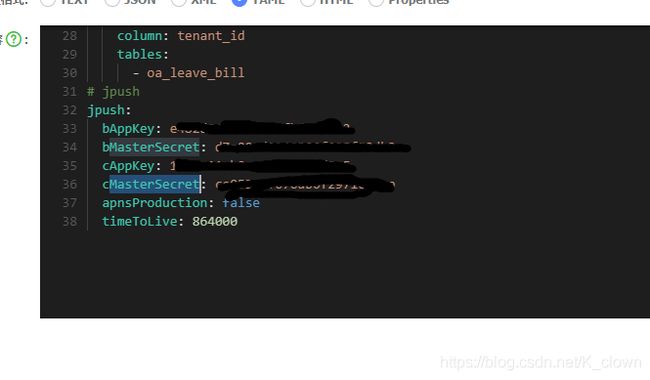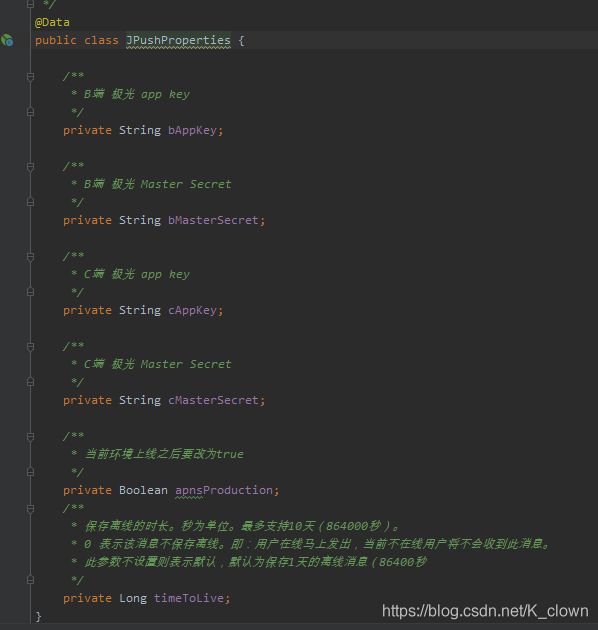- Socket(套接字)是什么,有什么作用?
给我个面子中不
java
Socket(套接字)是计算机网络编程中的一个重要概念,它是应用程序和网络协议之间的接口,用于实现不同主机或不同进程之间的通信。通过Socket,程序能够在网络中发送和接收数据,实现网络应用的功能。Socket的基本概念Socket是一种抽象的概念,提供了一种编程接口(API),使得应用程序可以通过它与网络通信。它通常在操作系统的网络协议栈和应用程序之间提供一个桥梁。具体来说,Socket是由操作
- hashmap为什么每次扩容都是2倍?
给我个面子中不
哈希算法散列表java
HashMap扩容为什么是2倍,且可以用移位操作代替与运算?在HashMap中,哈希桶(数组)的大小总是2的幂,扩容时也是原大小的2倍。这样做的主要目的是优化哈希计算,使得索引计算可以用位运算(&)替代取模(%),提高性能。1.HashMap扩容规则HashMap的数组容量始终是2的幂(16,32,64...)。扩容时,容量翻倍。索引计算采用(n-1)&hash,而不是hash%n。2.为什么扩容
- kafka相关问题
给我个面子中不
Java学习kafka分布式java
Kafka通过事务机制与幂等性功能相结合,实现了跨会话的幂等性。以下是详细解释:kafka是怎么通过事物保证跨会话的幂等性?1.幂等性与跨会话幂等性幂等性:指相同的操作被执行多次,其结果是一样的。在Kafka中,主要是指生产者发送相同的消息不会导致重复。跨会话幂等性:在生产者会话关闭并重启后,Kafka仍能保证发送的消息不会被重复处理。2.Kafka的幂等性原理Kafka的幂等性主要通过Produ
- 迁移学习基础知识
zhooooooou
深度学习迁移学习人工智能机器学习
简介使用迁移学习的优势:1、能够快速的训练出一个理想的结果2、当数据集较小时也能训练出理想的效果。注意:在使用别人预训练的参数模型时,要注意别人的预处理方式。原理:对于浅层的网络结构,他们学习到的角点信息和纹理信息都是通用的,将学习好的浅层网络的信息迁移到新的网络中,这样新的网络也拥有了识别底层通用特征的能力,从而能加快网络学习新的数据集的高维特征。常见的迁移学习的方式:1、载入权重后训练所有参数
- 并发编程面试题四
2301_76231794
面试
1、ReentrantLock和synchronized的区别及使用的场景synchronized关键字(是悲观锁):自动管理:synchronized是Java提供的一种内置锁机制,使用简单,不需要显式地获取和释放锁。可重入性:同一个线程可以多次获取同一个锁而不被阻塞。不可中断:一旦一个线程开始等待获取锁,它不能被其他线程中断。内存可见性:synchronized块或方法提供了内存可见性的保证,
- 主从dns+nfs+nginx综合实验
睡不够觉
centoslinux运维
目录1.实验要求2.配置主DNS1安装bind软件编辑主配置文件编辑区域数据文件检查配置文件和区域文件是否有误重启服务测试dns1是否生效3.配置从DNS2安装bind编辑从DNS2的主配置文件防火墙放行测试dns24.配置nfs服务创建共享目录写入指定内容,并编辑共享配置文件5.web服务配置下载nginx软件挂载共享目录到nginx的默认页面6.客服端配置安装bind-utils客户端测试7.
- AUTOSAR与arxml的文档解析
dont__cry
c语言autosar
如下是文档脑图一、文档概述该文档是AUTOSAR经典平台的应用接口用户指南,主要解释**AlTable(应用接口表)**的结构、方法论及相关技术细节,帮助开发者理解如何通过标准化接口实现软件组件的互操作性。关键内容目的:定义并发布稳定、广泛接受的汽车电子系统应用接口,支持跨厂商软件组件的通信。结构:包含元模型表示、兼容性管理、生命周期状态、视图概念及XML生成规则等。二、核心概念与示例1.AUTO
- 提到一个项目的“验证LOV”属性?提到lov和list项目有什么区别?思维导图 代码示例(java 架构)
用心去追梦
listjava架构
验证LOV(ListofValues)属性在OracleForms中,LOV(ListofValues)是一种用于显示可供选择的值列表的组件。它通常与字段或项关联,允许用户从预定义的选项列表中选择一个值,而不是手动输入。验证LOV属性确保用户只能从LOV提供的选项中选择值,从而增强了数据输入的准确性和一致性。验证LOV属性定义:当设置为“是”时,表示该字段必须从LOV中选择值;如果用户尝试输入不在
- python 游戏开发cocos2d库安装与使用
范哥来了
pythoncocos2d开发语言
Cocos2d-x是一个广泛使用的开源游戏开发框架,支持多种编程语言,包括Python。对于Python开发者来说,通常使用的是Cocos2d-py或者更现代的Cocos2d-x的Python绑定版本。这里我将指导你如何安装和开始使用Cocos2d-py。安装步骤安装Python:确保你的系统上已经安装了Python3.x版本。你可以从Python官方网站下载最新版的Python。安装pip:pi
- 迁移学习入门
EmbodiedTech
人工智能大模型迁移学习人工智能机器学习
迁移学习1迁移学习的概念预训练模型定义:简单来说别人训练好的模型。一般预训练模型具备复杂的网络模型结构;一般是在大量的语料下训练完成的预训练语言模型的类别现在我们接触到的预训练语言模型,基本上都是基于transformer这个模型迭代而来的因此划分模型类别的时候,以transformer架构来划分:Encoder-Only:只有编码器部分的模型,代表:BERTDecoder-Only:只要解码器部
- https握手过程
给我个面子中不
https网络协议http
HTTPS(HyperTextTransferProtocolSecure)是HTTP的安全版本,它通过SSL/TLS协议对通信内容进行加密,确保数据在传输过程中的机密性、完整性和身份验证。以下是HTTPS握手过程的详细说明,以及它是如何保证信息安全的。1.HTTPS的核心机制HTTPS的安全性主要依赖于以下技术:加密:使用对称加密和非对称加密结合的方式,确保数据在传输过程中不被窃听。身份验证:通
- 通用具身智能机器人首次进厂造芯!
量子位
在全球半导体产业竞争日益激烈的背景下,半导体生产在部分高度依赖人力的生产环节,传统的智能化生产模式仍暴露出效率瓶颈与污染问题。人工操作易导致污染,且效率不高、污染控制难度大。如今,随着通用智能机器人的应用,这一难题正迎来全新解决方案。3月18日,国内领先的具身智能机器人公司智平方与全球知名科技创新企业吉利科技集团旗下浙江晶能微电子有限公司正式签署战略合作协议。双方将基于智平方自研的端到端具身大模型
- HarmonyOS TEXT 语音搜索场景学习和总结
架构教育
在HarmonyOS中实现语音搜索功能时,涉及到麦克风权限的申请、音频数据的采集、编码和传输等多个步骤。以下是对上述代码的详细解析和补充说明:麦克风权限的申请与检查在HarmonyOS中,使用麦克风需要申请ohos.permission.MICROPHONE权限。在代码中,通过GRPermissionsUtils.checkPermissions方法来检查和申请权限。如果权限被授予,则可以继续进行
- 代练代打护航系统小程序源码:游戏生态的“双刃剑”
vue.jsmysql
近年来,随着游戏产业的蓬勃发展,代练代打行业也逐渐兴起。代练代打护航系统小程序的出现,为这一行业提供了一个新的平台,也引发了关于其利弊的讨论。本文将深入分析代练代打护航系统小程序源码,探讨其对游戏生态的影响。源码获取地址!!!!请点击!!!代练代打护航系统小程序通常包含以下功能模块:用户模块:用户注册、登录、个人信息管理、实名认证等。订单模块:玩家发布订单、代练接单、订单管理、交易担保等。评价模块
- YashanDB 运行日志管理
数据库
本文内容来自YashanDB官网,原文内容请见https://doc.yashandb.com/yashandb/23.3/zh/%E6%95%B0%E6%8D%AE%...运行日志通过日志级别控制记录开关和记录策略,级别为OFF时不记录运行日志。通过设置RUN\_LOG\_FILE\_COUNT参数修改运行日志的保留个数,当达到该参数设置的值(默认10)时,系统会自动删除时间靠前的日志。日志文件
- SciER:首个大规模科学文档中的实体和关系抽取数据集
数据集
2024-10-28,为科学文档中的实体和关系抽取领域带来了突破,提供了一个包含106篇完整科学出版物、超过24,000个实体和12,000个关系的大规模数据集,这对于构建科学知识图谱和促进科学信息抽取技术的发展具有重要意义。数据集地址:SciER|科学信息提取数据集|人工智能数据集一、研究背景:在科学文档中,实体(如数据集、方法、任务)和它们之间的关系对于理解科学发现和推动研究进展至关重要。然而
- YashanDB表的紧急恢复
数据库
#表的紧急恢复对于无法通过闪回进行快速恢复的表,可使用YashanDB的物理备份恢复功能和导入、导出功能进行紧急恢复。操作流程如下:备份现有数据库的所有数据文件,以防止在此过程的剩余步骤中出错。将数据库备份还原到备库环境。至少应恢复以下内容:SYSTEM和SYSAUX表空间包含还原或回退段的表空间包含要检索的数据的独立表空间使用还原的备份控制文件对该备份执行不完全恢复,直到删除表之前。从数据库的临
- 程序员996写bug?这个AI工具让你头发越秃代码越香
后端
凌晨三点的写字楼里,小王第18次按下F5刷新浏览器,控制台又跳出了新的报错信息。咖啡杯底的褐色痕迹在显示器蓝光下格外刺眼,他突然想起入职时主管说的"程序员越秃越强",摸了摸发际线苦笑——原来这句话的潜台词是"用头发换代码"啊。直到上个月团建时,我发现隔壁工位的老张居然在团建现场掏出笔记本写代码。凑近一看,他正在用DeepSeek的智能提示功能自动补全单元测试。更气人的是,这厮今年居然还长出了新发茬
- HarmonyNext实战:基于ArkTS的高性能网络请求与缓存优化案例详解
harmonyos-next
HarmonyNext实战:基于ArkTS的高性能网络请求与缓存优化案例详解在现代移动应用开发中,网络请求是不可避免的核心功能之一。然而,频繁的网络请求不仅会增加服务器负担,还会影响应用的性能和用户体验。HarmonyOSNext提供了强大的网络请求框架和缓存机制,帮助开发者优化网络请求性能。本文将深入探讨如何在HarmonyOSNext中使用ArkTS实现高性能网络请求与缓存优化。通过一个完整的
- Promise.all() 和 Promise.allSettled()的区别
风无雨
#JavaScript前端javascript开发语言
特性Promise.all()Promise.allSettled()失败时行为任意一个Promise失败后立即终止,返回第一个错误等待所有Promise完成(无论成功或失败)返回值成功时返回结果数组;失败时返回第一个错误始终返回对象数组,每个对象包含status(状态)和value(成功值)或reason(错误)适用场景需要所有Promise必须成功(如并行请求依赖全部结果的场景)需要记录所有P
- HarmonyNext实战:基于ArkTS的跨设备文件同步与冲突解决案例详解
harmonyos-next
HarmonyNext实战:基于ArkTS的跨设备文件同步与冲突解决案例详解在现代多设备协同的场景中,文件同步是一个常见的需求。然而,跨设备文件同步往往会面临冲突问题,例如同一文件在不同设备上被同时修改。HarmonyOSNext提供了强大的分布式文件系统和冲突解决机制,帮助开发者实现高效、可靠的跨设备文件同步。本文将深入探讨如何在HarmonyOSNext中使用ArkTS实现跨设备文件同步与冲突
- 第十天-字符串:编程世界的文本基石
大橙子房
aipythonjava
在编程的广阔领域中,字符串是极为重要的数据类型,它就像一座桥梁,连接着人类的自然语言和计算机能够理解与处理的数字信息。下面,让我们深入探索字符串的世界。一、字符串简介字符串是由零个或多个字符组成的有序序列,它在程序中用于表示文本信息。在Python语言环境下,创建字符串简洁直观,例如:str="HelloWorld"。这里,str作为字符串变量名,就如同给一个装着文本内容的盒子贴上了标签;Hell
- 学习第十一天-树
大橙子房
ai学习
一、树的基础概念1.定义树是一种非线性数据结构,由n个有限节点组成层次关系集合。特点:有且仅有一个根节点其余节点分为若干互不相交的子树节点间通过父子关系连接2.关键术语术语定义节点包含数据和子节点引用的单元根节点树的起始节点,没有父节点子节点直接连接到父节点的节点叶子节点没有子节点的节点度节点拥有的子树数目树的高度从根节点到最远叶子节点的最长路径边数树的深度从根节点到当前节点的层数路径从根到某节点
- HarmonyNext实战:基于ArkTS的高性能数据流处理系统开发
harmonyos-next
HarmonyNext实战:基于ArkTS的高性能数据流处理系统开发引言在HarmonyNext生态系统中,数据流处理是一个关键的技术领域。本文将深入探讨如何使用ArkTS构建一个高性能的数据流处理系统,重点讲解流式数据处理、并发模型、内存管理以及性能优化等高级主题。我们将通过一个实际的案例——实时日志分析系统,来展示如何将这些技术应用到实际工程中。系统架构设计我们的实时日志分析系统需要处理来自多
- Linux修改/设置服务器ip地址
大橙子房
Linuxlinux服务器centos
1.用户切换到root用户su-#普通用户切换到root用户2.cd到network-scripts目录下cd/etc/sysconfig/network-scriptsll#ll查看文件目录#找到ifcfg-exx这个格式的文件,我这里的是ifcfg-ens33#大家可能都不相同,但是前面的ifcfg-exx这些是一样的3.编辑ifcfg-ens33(每个人的文件名都不一样,要自己看文件名是什么
- 如何在Linux中运行脚本
大橙子房
Linuxlinux运维服务器
1.首先在windos下,新建一个txt文件,2,编写脚本#!/bin/bash#编写helloworld脚本echo"HelloWorld!"3.将.txt后缀改成.sh4.上传到Linux5,执行,./hello.sh6.若显示权限不足,赋予权限chmod777./hello.sh7.若是报错坏的解释器:没有那个文件或目录的解决方法sed's/\r//'-ihello.sh原因:由于windo
- 工业机器人:现代工业的智能力量
机器人之树小风
机器人科技经验分享
在当今科技飞速发展的时代,工业机器人已成为现代工业不可或缺的重要组成部分。它如同一位不知疲倦、高度精准且功能强大的“智能工匠”,以其独特的魅力和卓越的能力,深刻地改变着工业生产的面貌。工业机器人是一种能够自动执行任务的可编程机械装置。它通常由机械臂、控制系统和编程装置等部分组成。机械臂是机器人的主体结构,能够实现多自由度的灵活运动,模拟人类手臂的各种动作。控制系统则犹如机器人的“大脑”,负责指挥和
- 鸿蒙Next,图片上传01(扩展02截图保存到相册)-组件截图另通过沙箱保存到相册
harmonyos
1.componentSnapShot组件截图的get方法,得到PixelMap像素图像数据@ohos.arkui.componentSnapshot(组件截图)-UI界面-ArkTSAPI-ArkUI(方舟UI框架)-应用框架-华为HarmonyOS开发者//进行截图constpixelMap=awaitcomponentSnapshot.get('share')2.ImagePacker打包P
- 使用LoRA微调LLaMA3
想胖的壮壮
深度学习人工智能
使用LoRA微调LLaMA3的案例案例概述在这个案例中,我们将使用LoRA微调LLaMA3模型,进行一个文本分类任务。我们将使用HuggingFace的Transformers库来完成这个过程。步骤一:环境搭建安装必要的Python包pipinstalltransformersdatasetstorch配置GPU环境确保你的环境中配置了CUDA和cuDNN,并验证GPU是否可用。importtor
- 复旦:LLM不同层位置编码缩放
大模型任我行
大模型-结构原理人工智能自然语言处理语言模型论文笔记
标题:Layer-SpecificScalingofPositionalEncodingsforSuperiorLong-ContextModeling来源:arXiv,2503.04355摘要尽管大型语言模型(LLM)在处理长上下文输入方面取得了重大进展,但它们仍然存在“中间丢失”问题,即上下文中间的关键信息往往不足或丢失。我们广泛的实验表明,这个问题可能源于旋转位置嵌入(RoPE)的快速长期衰
- log4j对象改变日志级别
3213213333332132
javalog4jlevellog4j对象名称日志级别
log4j对象改变日志级别可批量的改变所有级别,或是根据条件改变日志级别。
log4j配置文件:
log4j.rootLogger=ERROR,FILE,CONSOLE,EXECPTION
#log4j.appender.FILE=org.apache.log4j.RollingFileAppender
log4j.appender.FILE=org.apache.l
- elk+redis 搭建nginx日志分析平台
ronin47
elasticsearchkibanalogstash
elk+redis 搭建nginx日志分析平台
logstash,elasticsearch,kibana 怎么进行nginx的日志分析呢?首先,架构方面,nginx是有日志文件的,它的每个请求的状态等都有日志文件进行记录。其次,需要有个队 列,redis的l
- Yii2设置时区
dcj3sjt126com
PHPtimezoneyii2
时区这东西,在开发的时候,你说重要吧,也还好,毕竟没它也能正常运行,你说不重要吧,那就纠结了。特别是linux系统,都TMD差上几小时,你能不痛苦吗?win还好一点。有一些常规方法,是大家目前都在采用的1、php.ini中的设置,这个就不谈了,2、程序中公用文件里设置,date_default_timezone_set一下时区3、或者。。。自己写时间处理函数,在遇到时间的时候,用这个函数处理(比较
- js实现前台动态添加文本框,后台获取文本框内容
171815164
文本框
<%@ page language="java" import="java.util.*" pageEncoding="UTF-8"%>
<!DOCTYPE html PUBLIC "-//W3C//DTD XHTML 1.0 Transitional//EN" "http://w
- 持续集成工具
g21121
持续集成
持续集成是什么?我们为什么需要持续集成?持续集成带来的好处是什么?什么样的项目需要持续集成?... 持续集成(Continuous integration ,简称CI),所谓集成可以理解为将互相依赖的工程或模块合并成一个能单独运行
- 数据结构哈希表(hash)总结
永夜-极光
数据结构
1.什么是hash
来源于百度百科:
Hash,一般翻译做“散列”,也有直接音译为“哈希”的,就是把任意长度的输入,通过散列算法,变换成固定长度的输出,该输出就是散列值。这种转换是一种压缩映射,也就是,散列值的空间通常远小于输入的空间,不同的输入可能会散列成相同的输出,所以不可能从散列值来唯一的确定输入值。简单的说就是一种将任意长度的消息压缩到某一固定长度的消息摘要的函数。
- 乱七八糟
程序员是怎么炼成的
eclipse中的jvm字节码查看插件地址:
http://andrei.gmxhome.de/eclipse/
安装该地址的outline 插件 后重启,打开window下的view下的bytecode视图
http://andrei.gmxhome.de/eclipse/
jvm博客:
http://yunshen0909.iteye.com/blog/2
- 职场人伤害了“上司” 怎样弥补
aijuans
职场
由于工作中的失误,或者平时不注意自己的言行“伤害”、“得罪”了自己的上司,怎么办呢?
在职业生涯中这种问题尽量不要发生。下面提供了一些解决问题的建议:
一、利用一些轻松的场合表示对他的尊重
即使是开明的上司也很注重自己的权威,都希望得到下属的尊重,所以当你与上司冲突后,最好让不愉快成为过去,你不妨在一些轻松的场合,比如会餐、联谊活动等,向上司问个好,敬下酒,表示你对对方的尊重,
- 深入浅出url编码
antonyup_2006
应用服务器浏览器servletweblogicIE
出处:http://blog.csdn.net/yzhz 杨争
http://blog.csdn.net/yzhz/archive/2007/07/03/1676796.aspx
一、问题:
编码问题是JAVA初学者在web开发过程中经常会遇到问题,网上也有大量相关的
- 建表后创建表的约束关系和增加表的字段
百合不是茶
标的约束关系增加表的字段
下面所有的操作都是在表建立后操作的,主要目的就是熟悉sql的约束,约束语句的万能公式
1,增加字段(student表中增加 姓名字段)
alter table 增加字段的表名 add 增加的字段名 增加字段的数据类型
alter table student add name varchar2(10);
&nb
- Uploadify 3.2 参数属性、事件、方法函数详解
bijian1013
JavaScriptuploadify
一.属性
属性名称
默认值
说明
auto
true
设置为true当选择文件后就直接上传了,为false需要点击上传按钮才上传。
buttonClass
”
按钮样式
buttonCursor
‘hand’
鼠标指针悬停在按钮上的样子
buttonImage
null
浏览按钮的图片的路
- 精通Oracle10编程SQL(16)使用LOB对象
bijian1013
oracle数据库plsql
/*
*使用LOB对象
*/
--LOB(Large Object)是专门用于处理大对象的一种数据类型,其所存放的数据长度可以达到4G字节
--CLOB/NCLOB用于存储大批量字符数据,BLOB用于存储大批量二进制数据,而BFILE则存储着指向OS文件的指针
/*
*综合实例
*/
--建立表空间
--#指定区尺寸为128k,如不指定,区尺寸默认为64k
CR
- 【Resin一】Resin服务器部署web应用
bit1129
resin
工作中,在Resin服务器上部署web应用,通常有如下三种方式:
配置多个web-app
配置多个http id
为每个应用配置一个propeties、xml以及sh脚本文件
配置多个web-app
在resin.xml中,可以为一个host配置多个web-app
<cluster id="app&q
- red5简介及基础知识
白糖_
基础
简介
Red5的主要功能和Macromedia公司的FMS类似,提供基于Flash的流媒体服务的一款基于Java的开源流媒体服务器。它由Java语言编写,使用RTMP作为流媒体传输协议,这与FMS完全兼容。它具有流化FLV、MP3文件,实时录制客户端流为FLV文件,共享对象,实时视频播放、Remoting等功能。用Red5替换FMS后,客户端不用更改可正
- angular.fromJson
boyitech
AngularJSAngularJS 官方APIAngularJS API
angular.fromJson 描述: 把Json字符串转为对象 使用方法: angular.fromJson(json); 参数详解: Param Type Details json
string
JSON 字符串 返回值: 对象, 数组, 字符串 或者是一个数字 示例:
<!DOCTYPE HTML>
<h
- java-颠倒一个句子中的词的顺序。比如: I am a student颠倒后变成:student a am I
bylijinnan
java
public class ReverseWords {
/**
* 题目:颠倒一个句子中的词的顺序。比如: I am a student颠倒后变成:student a am I.词以空格分隔。
* 要求:
* 1.实现速度最快,移动最少
* 2.不能使用String的方法如split,indexOf等等。
* 解答:两次翻转。
*/
publ
- web实时通讯
Chen.H
Web浏览器socket脚本
关于web实时通讯,做一些监控软件。
由web服务器组件从消息服务器订阅实时数据,并建立消息服务器到所述web服务器之间的连接,web浏览器利用从所述web服务器下载到web页面的客户端代理与web服务器组件之间的socket连接,建立web浏览器与web服务器之间的持久连接;利用所述客户端代理与web浏览器页面之间的信息交互实现页面本地更新,建立一条从消息服务器到web浏览器页面之间的消息通路
- [基因与生物]远古生物的基因可以嫁接到现代生物基因组中吗?
comsci
生物
大家仅仅把我说的事情当作一个IT行业的笑话来听吧..没有其它更多的意思
如果我们把大自然看成是一位伟大的程序员,专门为地球上的生态系统编制基因代码,并创造出各种不同的生物来,那么6500万年前的程序员开发的代码,是否兼容现代派的程序员的代码和架构呢?
- oracle 外部表
daizj
oracle外部表external tables
oracle外部表是只允许只读访问,不能进行DML操作,不能创建索引,可以对外部表进行的查询,连接,排序,创建视图和创建同义词操作。
you can select, join, or sort external table data. You can also create views and synonyms for external tables. Ho
- aop相关的概念及配置
daysinsun
AOP
切面(Aspect):
通常在目标方法执行前后需要执行的方法(如事务、日志、权限),这些方法我们封装到一个类里面,这个类就叫切面。
连接点(joinpoint)
spring里面的连接点指需要切入的方法,通常这个joinpoint可以作为一个参数传入到切面的方法里面(非常有用的一个东西)。
通知(Advice)
通知就是切面里面方法的具体实现,分为前置、后置、最终、异常环
- 初一上学期难记忆单词背诵第二课
dcj3sjt126com
englishword
middle 中间的,中级的
well 喔,那么;好吧
phone 电话,电话机
policeman 警察
ask 问
take 拿到;带到
address 地址
glad 高兴的,乐意的
why 为什么
China 中国
family 家庭
grandmother (外)祖母
grandfather (外)祖父
wife 妻子
husband 丈夫
da
- Linux日志分析常用命令
dcj3sjt126com
linuxlog
1.查看文件内容
cat
-n 显示行号 2.分页显示
more
Enter 显示下一行
空格 显示下一页
F 显示下一屏
B 显示上一屏
less
/get 查询"get"字符串并高亮显示 3.显示文件尾
tail
-f 不退出持续显示
-n 显示文件最后n行 4.显示头文件
head
-n 显示文件开始n行 5.内容排序
sort
-n 按照
- JSONP 原理分析
fantasy2005
JavaScriptjsonpjsonp 跨域
转自 http://www.nowamagic.net/librarys/veda/detail/224
JavaScript是一种在Web开发中经常使用的前端动态脚本技术。在JavaScript中,有一个很重要的安全性限制,被称为“Same-Origin Policy”(同源策略)。这一策略对于JavaScript代码能够访问的页面内容做了很重要的限制,即JavaScript只能访问与包含它的
- 使用connect by进行级联查询
234390216
oracle查询父子Connect by级联
使用connect by进行级联查询
connect by可以用于级联查询,常用于对具有树状结构的记录查询某一节点的所有子孙节点或所有祖辈节点。
来看一个示例,现假设我们拥有一个菜单表t_menu,其中只有三个字段:
- 一个不错的能将HTML表格导出为excel,pdf等的jquery插件
jackyrong
jquery插件
发现一个老外写的不错的jquery插件,可以实现将HTML
表格导出为excel,pdf等格式,
地址在:
https://github.com/kayalshri/
下面看个例子,实现导出表格到excel,pdf
<html>
<head>
<title>Export html table to excel an
- UI设计中我们为什么需要设计动效
lampcy
UIUI设计
关于Unity3D中的Shader的知识
首先先解释下Unity3D的Shader,Unity里面的Shaders是使用一种叫ShaderLab的语言编写的,它同微软的FX文件或者NVIDIA的CgFX有些类似。传统意义上的vertex shader和pixel shader还是使用标准的Cg/HLSL 编程语言编写的。因此Unity文档里面的Shader,都是指用ShaderLab编写的代码,
- 如何禁止页面缓存
nannan408
htmljspcache
禁止页面使用缓存~
------------------------------------------------
jsp:页面no cache:
response.setHeader("Pragma","No-cache");
response.setHeader("Cache-Control","no-cach
- 以代码的方式管理quartz定时任务的暂停、重启、删除、添加等
Everyday都不同
定时任务管理spring-quartz
【前言】在项目的管理功能中,对定时任务的管理有时会很常见。因为我们不能指望只在配置文件中配置好定时任务就行了,因为如果要控制定时任务的 “暂停” 呢?暂停之后又要在某个时间点 “重启” 该定时任务呢?或者说直接 “删除” 该定时任务呢?要改变某定时任务的触发时间呢? “添加” 一个定时任务对于系统的使用者而言,是不太现实的,因为一个定时任务的处理逻辑他是不
- EXT实例
tntxia
ext
(1) 增加一个按钮
JSP:
<%@ page language="java" import="java.util.*" pageEncoding="UTF-8"%>
<%
String path = request.getContextPath();
Stri
- 数学学习在计算机研究领域的作用和重要性
xjnine
Math
最近一直有师弟师妹和朋友问我数学和研究的关系,研一要去学什么数学课。毕竟在清华,衡量一个研究生最重要的指标之一就是paper,而没有数学,是肯定上不了世界顶级的期刊和会议的,这在计算机学界尤其重要!你会发现,不论哪个领域有价值的东西,都一定离不开数学!在这样一个信息时代,当google已经让世界没有秘密的时候,一种卓越的数学思维,绝对可以成为你的核心竞争力. 无奈本人实在见地

